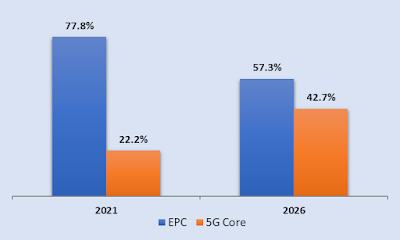Decoding the RAN coding conundrum – with AI!
How important is coding in the RAN? The answer, “very important” is not going to win you any awards, as it is a no-brainer!
Coding is not just about data representation; it's about optimizing data flow, enhancing error correction, and ensuring robustness in diverse network conditions.
Let us look at a very specific intent – error correction. To prevent data from being corrupted by channel interference and noise, channel coding employs redundancy. At the heart of 5G RAN's coding mechanisms is the use of Polar Codes and LDPC (Low-Density Parity-Check) codes.
Polar Codes work well in 5G control channels. This is because, they are well suited for limited or finite data lengths.
LDPC codes works well with longer lengths. Not surprising, given the “low density” properties of the codes. LDPC essentially ensures that even if some packets are corrupted during transmission, the original data can be reconstructed without retransmission. LDPC codes, are therefore employed for data channels. If you are streaming a high-definition video or downloading a large file, LDPC is at work.
Codes, while being necessary, are not without their burdens. They demand significant computational resources. In real-time scenarios, where data needs to be encoded and decoded on the fly, ensuring efficiency without compromising on speed is a challenge.
5G networks are dynamic (or are at least supposed to be in their truest form). User densities, mobility patterns and interference levels; all of them can and do vary. The coding rate, therefore, needs to be dynamic, Which means that the amount of redundancy added for error correction, needs to be dynamic.
In a congested urban environment with high interference levels, a higher coding rate might be necessary to ensure data integrity. In contrast, in a stable, low-interference scenario, a lower coding rate could suffice, allowing for higher data throughput.
And then there is network slicing. Each slice, tailored for a specific use case, might have its own set of requirements in terms of latency, reliability, and throughput. Designing coding strategies that cater to these diverse needs, while ensuring efficient resource utilization, is challenging.
Its not as if traditional coding techniques have not served well. They, however, fall short on adaptability.
Enter AI.
The usage of AI in RAN coding is gathering shape. Insight Research has identified coding as one of the four principal applications of AI in the RAN in its report, “AI and RAN – How fast will they run?”
Lets dive into the coding itself. We know that LDPC codes are faster and offer better performance. We also know that they are more complex to encode and typically require more iterations than iterative turbo coding. The ‘LD’ in LDPC can become ‘latency delivered’, if used blindly without the appropriate tweaks.
Deep Learning can help by
- identify LDPC codes and subsequently reduce the decoding delay
- developing error correction codes for nonlinear channels
- analyzing the trade-off between LDPC codes and channel coding
- optimizing (that word again!) the decoding algorithm to achieve non-convex minima (jargon alert – this only means quickly identifying the extremities of a pattern with certainty)
Experimental studies conducted on LDPC decoders peppered with DNN were able to achieve that golden mean of ironclad BER performance WITHOUT compromising on the throughput.
Polar codes too have been touched by AI. Neural networks have been explored to optimize polar code constructions. How? By feeding a neural network with data from various transmission scenarios and corresponding optimal polar code constructions, the network can learn to design optimal codes for new, previously unencountered scenarios.
This is just the beginning.
Lets look at autoencoders. We know that they are from the neural network family. Once trained on a dataset representing various channel conditions, these autoencoders can efficiently encode and decode data. It is said that they can outperform traditional algorithms in terms of error rates and computational efficiency.
Impressed?
ML algorithms are trained on historical data. They can then predict the optimal modulation and coding schemes taking into account all the unpredictable - current network conditions, user mobility patterns and traffic demand.
In a high-interference scenario for example, an ML algorithm might recommend a robust modulation scheme with a high coding rate to ensure data integrity. QPSK anyone?
In essence, AI can and does deliver the full spectrum of improvements and enhancements in coding mechanisms; ranging from making the existing coding work better to selecting the best coding alternative for relevant scenarios.
The optimism expressed earlier should be tempered with a dose of realism.
The Polar Codes, which manage the control channels, remain predominantly in the ambit of the RU. Since RU continues to be largely outside the purview of Open or Virtual RANs, the applicability of advanced AI and ML constructs to the coding mechanism is constricted to an extent.
It should be noted that even LDPC, considered amenable to basebands, is amenable only in the relative sense. It is only in certain splits that LDPC has been pulled ‘upwards’ – towards the ‘intelligent’ center. Thus, a significant market for coding control remains locked in the RU.
AI in coding is catching root. We can hope to see it blossom in the next half decade.
|
RELATED BLOGS

The Cloud Native Pole Vault – The contrasting fates of Rakuten Mobile and Jio

Microservices – The wind beneath the CNF wings


